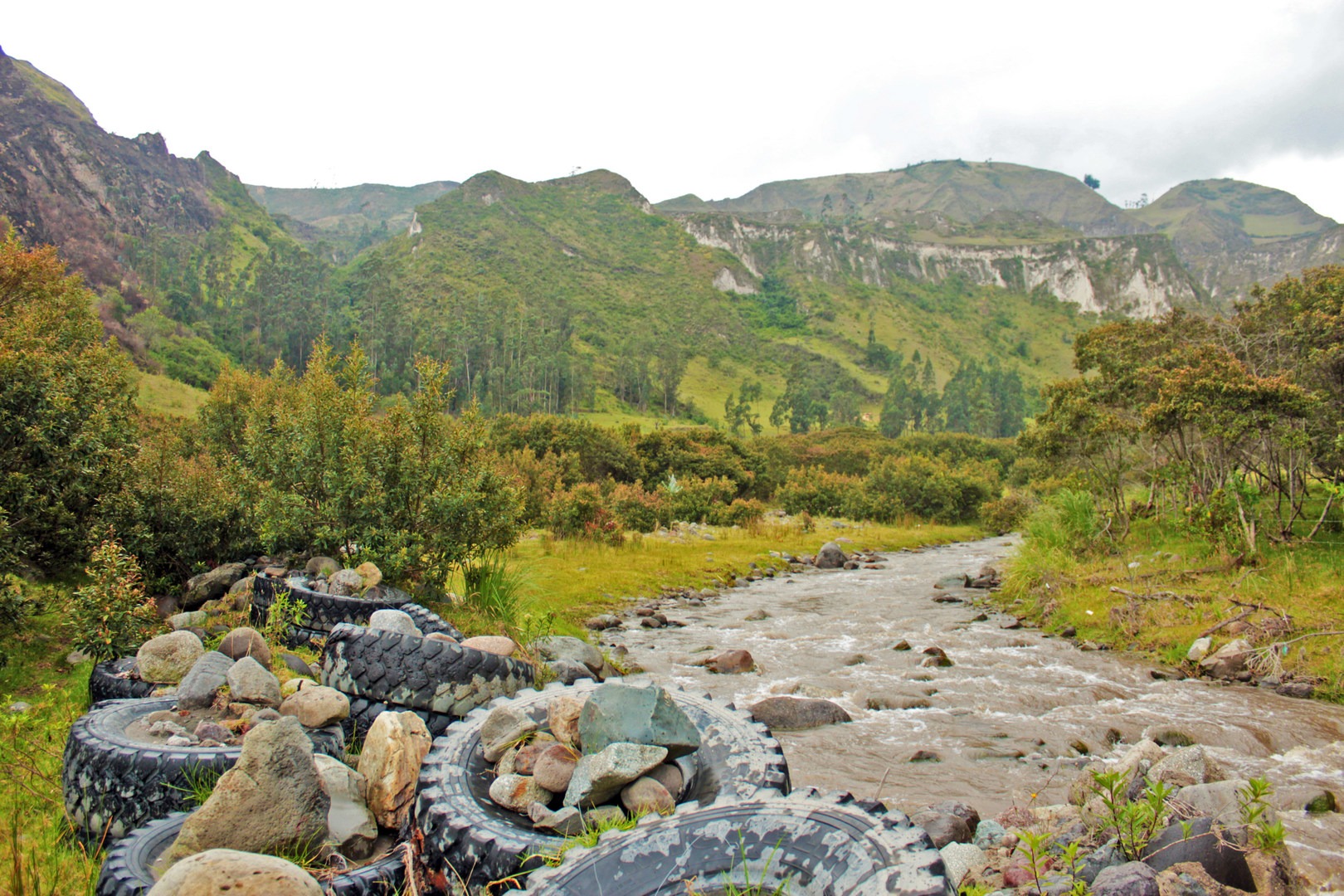You are here
The Quilotoa Loop is widely considered the most popular hike in Ecuador, a multi-day and physically strenuous trek between remote Ecuadorian villages that culminates at the spectacular Laguna de Quilotoa, a crater lake in the stomach of an old volcano at 3,800 meters. However, as such, it can see some dense traffic, but there are plenty of lesser-known area hikes that offer a similar and more private experience. The Cochalo Loop, starting in the village of Isinliví, is one such hike.
While the beginning of this hike does cover some of the ground covered in the Sigchos to Isinliví leg of the full loop, much of it offers new views. For those skipping that leg of the main loop (which is the most common leg skipped), it offers a chance to see some of the missed sights. Note that this begins at its highest elevation, drops down into Cumjin River canyon, and climbs back up. As such, be mindful that all the climbing is done in the latter half of the hike.
Begin at the Llullu Llama Mountain Lodge—presumably the hostel you’re likely staying at in Isinliví, considering it is only 1 of 2. From the hostel door, take a hard right and go down the grassy path along the kitchen wall of the hostel. At the bottom of the short hill, at the edge of the hostel grounds, turn right at the T-junction and continue going downhill for another 0.3 kilometer. Take the smaller trail on the left leading down a steeper hill.
At the bottom of this hill, you’ll see a cement bridge over the stream, but do not cross the bridge. Instead, follow the trail splintering off to the right before the bridge and going around an unassuming dirt bank. It’s easy to miss, but not if you look carefully. Follow this trail for 0.5 kilometer as it follows the small stream. You’ll be walking along several crude wooden bridges as you go.
Eventually, you’ll come to a small farmhouse directly in front of you, and navigation gets especially tricky. Take your time to fully take in your surroundings, and you shouldn’t have any trouble. At this house, the trail curves along the left side of the property, running along dense trees planted in a line so much that they act as something of a fence between the house’s property and the small field on your left. At the end of the row of trees, the trail splits; take the right fork.
Almost immediately, you’ll come to another fork; this time go left until you cross a small (very small) stream and go right.
After another 100 meters—you guessed it—another fork! This one is helpfully marked with a wooden cross. Go right here. Note: This section of trail is par for the course when hiking in the Quilotoa Area. It can be incredibly frustrating and stressful, but the stakes are low. Even if you get lost, you will always run into someone who can point you the right way, assuming you understand basic directional Spanish.
After 150 meters, you’ll see some power lines passing overhead on the trail marking another fork. Make sure to go right and downhill. Follow this path for just shy of 1 kilometer, continuing downhill and eventually following a small stream. This section of trail gets EXTREMELY muddy and swampy if it has rained recently. Wear waterproof hiking boots or you’re suffer through the rest of the hike with soggy feet. As you get farther into the streambed, the path fades out, but the dense willows and underbrush will naturally funnel you in the right direction.
At the bottom of the hill, you will thankfully come to the coolest part of the hike: the lush valley of the rapidly flowing Cumjin River. This lush and wet area is unique when compared to much of the loop, which is dry and arid. Follow the path curving right with the river on your left and a barbed wire fence on your right and continue for 0.75 kilometer.
Here you’ll cross a side-less wooden bridge and walk uphill for 0.25 kilometer until you come to a main road and a wooden archway. Pass under the arch and follow the main road for another 0.75 kilometer all the way to the village of Cochalo, a perfect picture of typical life in remote Ecuadorian villages.
Continue through the village, passing the escuela and church on the left. Turn right at the T-junction by the school and go right again on a small uphill path (as opposed to follow the main road left).
This is where the real climb begins, so hopefully you saved your legs. Continue uphill for 1.5 kilometers, ignoring any other intersecting trails. Only one (about 0.5 km long) is large enough to cause any hesitation; just made sure you keep left here. After 1 kilometer, you’ll need to hop over a gate. Don’t worry, you’re still on the right path.
After 1.5 kilometers from Cochalo and almost 1,000 meters of elevation climbed, you’ll come to a main road, where you’ll turn right and follow for 1 kilometer until you can see Isinliví across the valley to your right. At this point, there are multiple ways to get there. As long as you keep going that direction, it doesn’t matter which you take. The easiest is this: When the main road curves around to the right, a small trail splits off downhill to the right of the main road and leads right back to the hostel.
Logistics + Planning
Current Weather: Powered by Dark Sky






























Comments
Sign In and share them.